Measurement samples using the metal fatigue identification device
Measurement condition of railroad rails
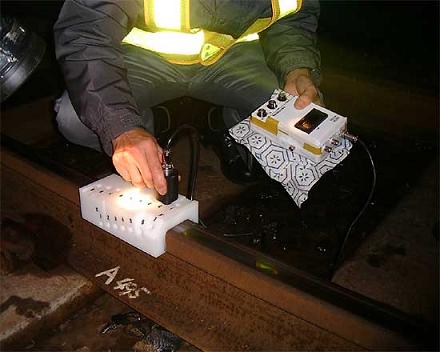
Measurement sample of 60 km railway rolling fatigue
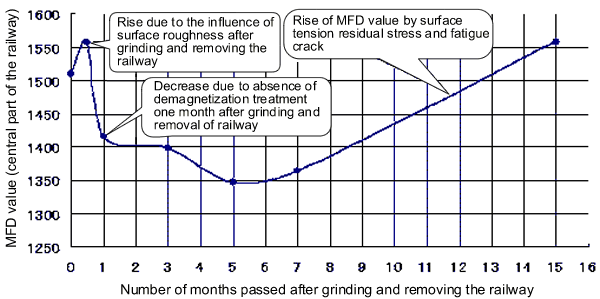
Change of MFD value (electromagnetic substitution characteristic value) by the forged frequency of forged metal mold and fatigue crack occurrence
(Sample of MFD value decrease with the forged frequency of forged metal mold punch for automobiles)


Photo 1: Sample of measure fatigue damage rate by drill abrasion (application example of U-type sensor)
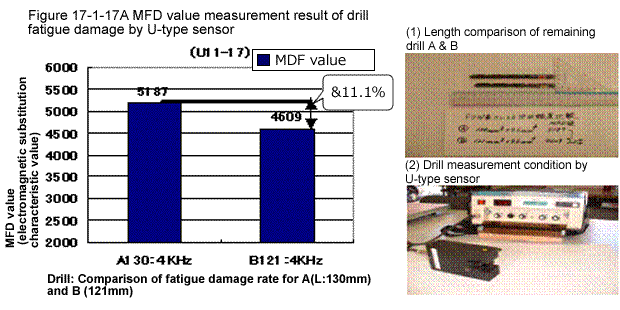
Measurement result of rolling fatigue value for Collo axis bearing
Measurement of rolling fatigue of bearing materials (SUJ2)
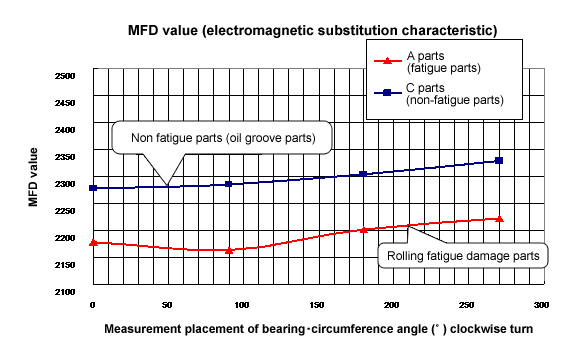
Installation condition of special measurement treatment device for collo axis and magnetic sensor

Shock fatigue by golf club heads (Ti alloy)
Fatigue damage rate graph by shock fatigue tests with golf club heads
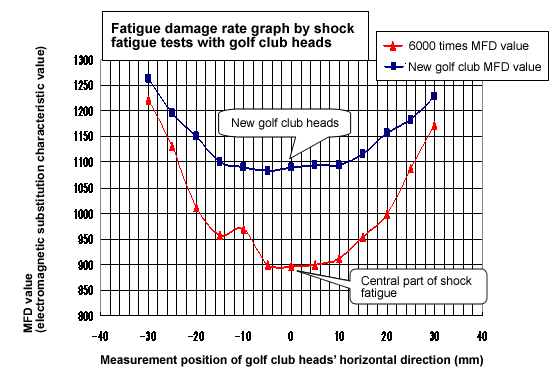

Result of fatigue test for stainless steel (SUS304) (non-magnetic materials)
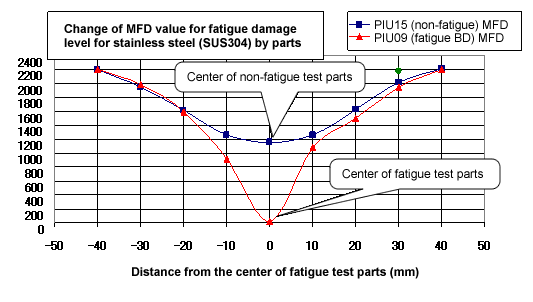
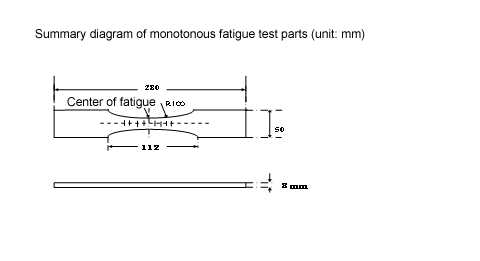
Aluminum alloy (ultra-duralumin A7075)
Measurement result of fatigue damage rate for aluminum alloy (ultra-duralumin A7075P) by tensile fatigue test
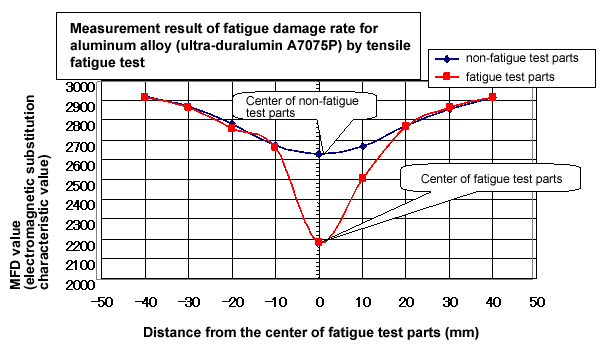
Proposal for new maintenance methods adaptable to current situations
Condition-based maintenance system

What is CBM(Condition-Based -Maintenance)?
We conduct conventional detailed inspection regularly once a year for condition-based maintenance using the TMB method through overhaul to acquire the level of fatigue damage,
However, with the CBM method, we can always measure and inspect parts, and detect and handle unusual conditions at an early stage to prevent accidents.
We propose a "predictive maintenance" method by regular inspection, and by using a measurement system through the metal fatigue identification device.
Measures are taken based on several previous damage accident cases to monitor the metal fatigue damage level before fatigue cracks occur.
For this purpose, a regular monitoring system through the predictive maintenance management system is conducted,
This device is a product developed through the guidance and support of the Japan Small and Medium Enterprise Corporation, Kanagawa Industrial Technology Research Institute, and Yokohama National University.
















